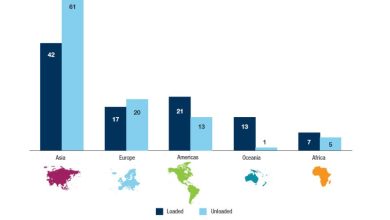What is a DDoS Attack? A Comprehensive Guide to Cybersecurity Threats

Introduction to DDoS Attacks
In today’s digital era, cyber threats have become a major concern for businesses, governments, and individuals alike. Among the many forms of cyberattacks, Distributed Denial of Service (DDoS) attacks are some of the most disruptive and widely known. A DDoS attack involves overwhelming a server, service, or network with a massive amount of internet traffic, rendering it unable to function properly. The consequences of such an attack can be devastating, leading to loss of business, trust, and potentially compromising sensitive information. This article provides an in-depth look into what ddos attacks are, how they work, and the key measures to defend against them.
Understanding the Mechanics of a DDoS Attack
At its core, a DDoS attack aims to make a website or online service unavailable to its intended users by flooding it with so much traffic that it can no longer handle legitimate requests. These attacks typically rely on a botnet—a network of compromised devices, such as computers, servers, and even IoT devices, which have been infected with malware. The attacker controls these devices remotely and instructs them to send vast amounts of traffic to the target. As the traffic increases, the target’s server is overwhelmed, leading to slowdowns, crashes, or complete shutdowns.
A distinguishing factor of a ddos attack is that the malicious traffic originates from multiple sources, making it difficult to stop by simply blocking a single IP address. This distributed nature also makes DDoS attacks particularly hard to defend against, as the attack traffic is often spread across multiple geographic locations.
Types of DDoS Attacks
There are several types of DDoS attacks, each targeting different aspects of a system’s infrastructure. The main categories include:
- Volumetric Attacks: These are the most common and involve overwhelming the target’s network bandwidth with an enormous amount of data. Examples include User Datagram Protocol (UDP) floods and Internet Control Message Protocol (ICMP) floods.
- Protocol Attacks: These attacks exploit vulnerabilities in network protocols to exhaust server resources. SYN flood and Ping of Death are classic examples of protocol attacks. They aim to interfere with the server’s connection management capabilities, leading to service disruptions.
- Application Layer Attacks: These attacks focus on Layer 7 (the application layer) of the OSI model, targeting specific applications like HTTP, DNS, or SMTP. HTTP floods, for example, involve sending a large number of requests to a website to exhaust its processing power. These attacks can be particularly challenging to detect, as they often mimic normal user behavior.
Why Do Cybercriminals Launch DDoS Attacks?
The motivations behind DDoS attacks vary. One of the primary reasons is to disrupt the operations of a target organization, often to cause financial loss or reputational damage. For businesses, especially those in e-commerce, downtime caused by a DDoS attack can lead to a loss of revenue and customer trust. In some cases, attackers use DDoS as a distraction while they engage in more targeted cybercrimes, such as data theft or malware deployment.
Another common motivation is to extort money from victims. In what is known as a ransom DDoS (RDoS) attack, the attacker threatens to carry out or continue a DDoS attack unless a ransom is paid. Hacktivists may also use DDoS attacks to protest against organizations or governments by shutting down their online presence. Additionally, competitors might employ DDoS tactics to sabotage their rivals’ online services during critical periods, such as sales events or product launches.
The Impact of DDoS Attacks on Businesses
DDoS attacks can have far-reaching consequences for businesses, beyond just immediate financial losses. The primary impact is service downtime, which can prevent customers from accessing websites, making purchases, or using online services. This loss of availability is especially damaging to businesses that rely on continuous uptime, such as financial institutions, e-commerce platforms, and media streaming services.
In addition to financial losses, a DDoS attack can severely damage a company’s reputation. Customers expect reliability, and repeated service outages can lead to a loss of trust. A significant amount of resources may also be spent on mitigating the attack, including hiring cybersecurity experts and investing in new infrastructure or DDoS protection services. In some cases, prolonged disruptions may lead to regulatory penalties, particularly in industries like healthcare or finance, where availability of services is critical.
How to Defend Against DDoS Attacks
Defending against DDoS attacks requires a combination of robust infrastructure, proactive monitoring, and specialized DDoS protection services. One of the first lines of defense is using a Content Delivery Network (CDN) or load balancer to distribute traffic across multiple servers. This prevents any single server from being overwhelmed by a sudden surge in traffic.
DDoS mitigation services can also be invaluable. These services use advanced algorithms and machine learning to detect abnormal traffic patterns in real-time and filter out malicious requests before they reach your server. Another key defense is implementing rate limiting, which caps the number of requests a user or device can make in a given period. Rate limiting prevents malicious users from overwhelming your server with excessive requests.
Finally, businesses should have a DDoS response plan in place. This includes having contact information for DDoS mitigation service providers, creating a communications plan for notifying customers, and establishing internal protocols for dealing with the attack.
Legal and Ethical Considerations of DDoS Attacks
It is important to understand that while some may use stress testing tools to test their own networks, launching a DDoS attack against any third party is illegal. In many countries, DDoS attacks are considered cybercrimes and are punishable by law. Even renting a botnet or paying for a DDoS service to disrupt a competitor’s website can result in severe legal consequences, including hefty fines and prison time.
Beyond the legal issues, there are also ethical considerations. Engaging in or condoning DDoS attacks undermines the integrity of the internet and can harm innocent users. Organizations should instead focus on legal and ethical methods for improving cybersecurity and protecting their networks from potential threats.
Preparing for the Future: Trends in DDoS Attacks
As technology evolves, so do the methods cybercriminals use to carry out DDoS attacks. One emerging trend is the use of IoT (Internet of Things) devices in botnets. With billions of IoT devices connected globally, they present an attractive target for attackers looking to increase the scale of their DDoS operations. Since many IoT devices lack proper security protocols, they are often easy to compromise and can be used to launch large-scale attacks.
Another trend is the rise of more sophisticated, multi-vector DDoS attacks that combine different techniques to target various layers of a network’s infrastructure simultaneously. These attacks are harder to defend against because they require multiple mitigation strategies.
To stay ahead of these evolving threats, organizations need to continuously monitor emerging trends in cybersecurity, update their defenses, and invest in advanced DDoS protection services.
Conclusion
DDoS attacks remain one of the most prevalent and disruptive forms of cyberattacks in today’s digital landscape. Understanding how these attacks work, why they occur, and how to defend against them is crucial for businesses of all sizes. By employing best practices, investing in robust infrastructure, and staying informed about the latest cybersecurity trends, businesses can mitigate the risk of a DDoS attack and protect their online presence.
As cyber threats continue to evolve, staying vigilant and proactive is the key to minimizing the impact of DDoS attacks and ensuring your website remains resilient against future disruptions.




